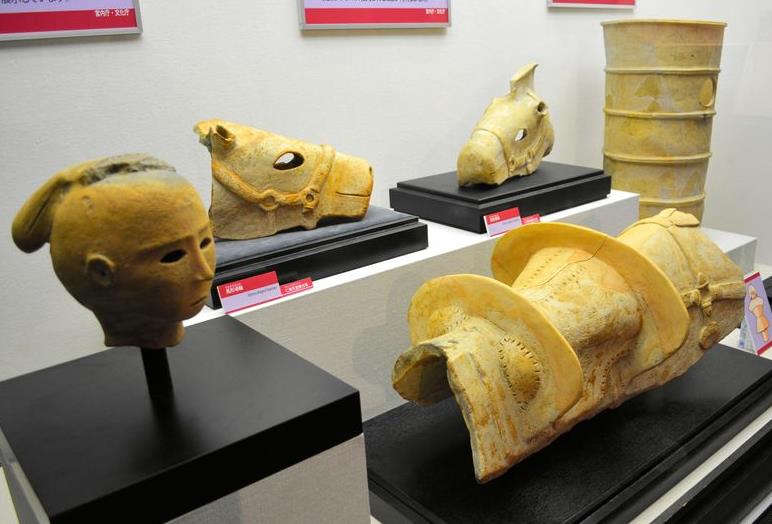An archaeological exhibition, touring Japan and now making a stop in Tokyo, is offering a breathtaking glimpse into the lifestyles and thoughts of people who inhabited the Japanese archipelago from prehistoric through medieval times.

A 2.8-centimeter-long, comma-shaped "magatama" jade bead and a bronze mirror are among the finds unearthed from the Inuyama Tenjinyama burial mound in Tokushima, the capital of Tokushima Prefecture. A rare find from the fifth century, when society was patrilineal, was an aged matriarch found buried in a tomb believed to belong to a group engaged in maritime trade.
Four stone clubs, each measuring more than a meter, were found in parallel positions at the Midorikawa Higashi site in Kunitachi, western Tokyo, that are believed to be 4,000 years old. The largest stone club previously unearthed in Japan measures 2 meters. Half that length is still considered long, and four clubs of that dimension found together has no parallel elsewhere in Japan.

One particular exhibit of note includes 13 select "haniwa" (terracotta figurines and sculptures) that were unearthed from sites administered by the Imperial Household Agency. The sites include those the agency believes to be tombs of emperors and other imperial ancestors.
"Never before have such a large number of haniwa toured Japan at one time," said an official at the agency's Mausolea and Tombs Division.

The Hashihaka burial mound in Sakurai, Nara Prefecture, which some say may be the tomb of Himiko, a third-century shaman queen, produced a 45-centimeter-tall, pot-shaped haniwa. A hole in its bottom indicates the haniwa was made for decorative purposes rather than as an actual water container.
Also on exhibit are finds unearthed as a result of the March 2011 Great East Japan Earthquake. Seven archaeological sites were discovered in Iwate, Miyagi and Fukushima prefectures when communities were relocated to areas considered safe from future tsunami and during road construction following the disaster. They include the remains of ninth-century ironwork furnaces from the Oshimizu B and Sawairi B sites in Shinchi, Fukushima Prefecture, and roof tiles unearthed from the site of Sendai Castle in Sendai, Miyagi Prefecture.
The exhibition at the Edo-Tokyo Museum in Sumida Ward runs through July 25 (with the exceptions of July 16 and 22). The venue is open from 9:30 a.m. to 5:30 p.m. (7:30 p.m. on Saturdays). The admission is 600 yen for adults and free for elementary school students and younger children.
Author: KazuakiI Owaki | Source: The Asahi Shimbun [July 12, 2013]
VIA «Exhibition showcases ancient Japanese archaeological discoveries»